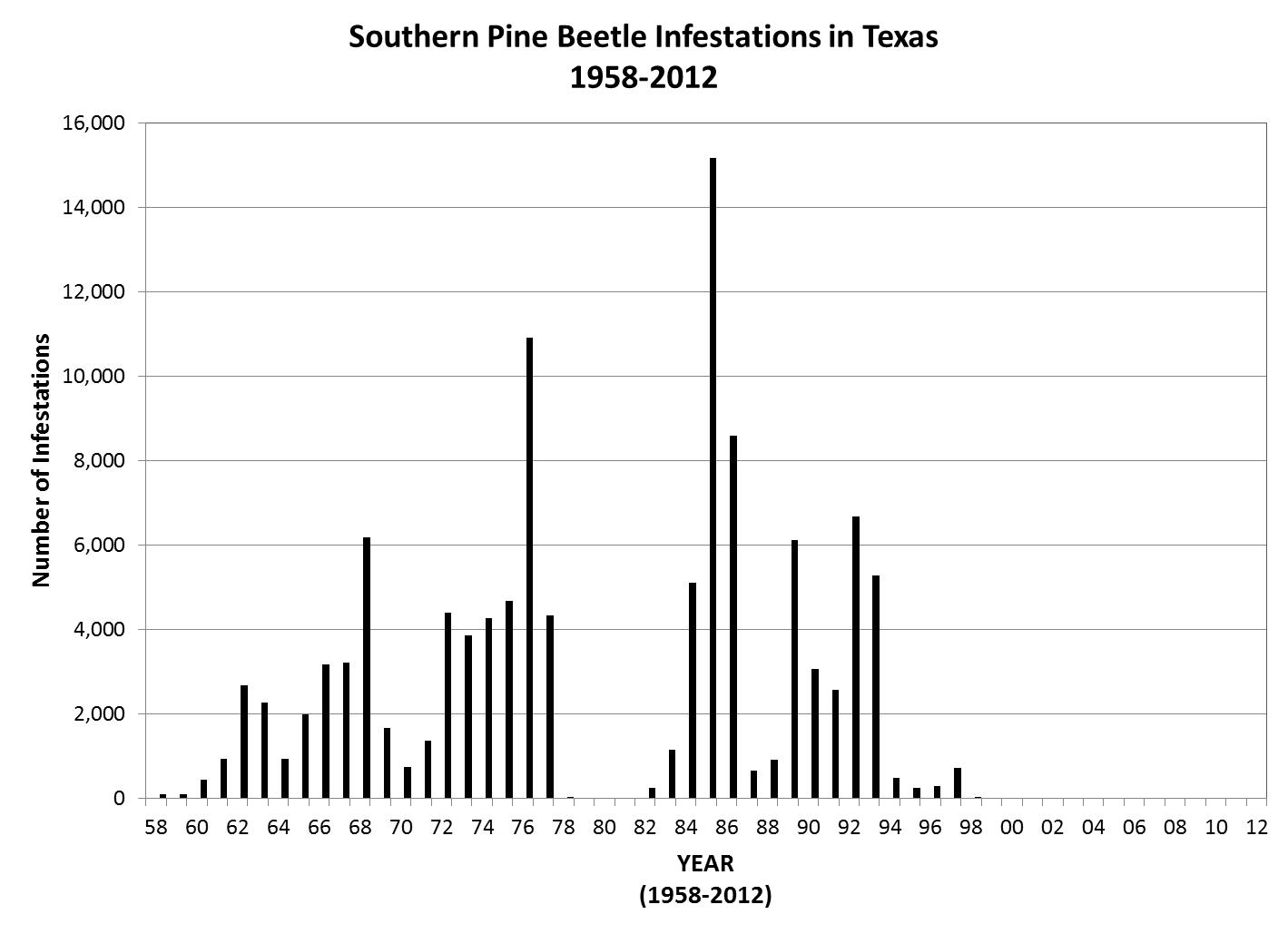
Texas A&M Forest Service (TFS) has kept records of infestations of the southern pine beetle (SPB) in East Texas since the early 1950s. Beginning in 1958, East Texas experienced a 20-year period when SPB populations remained at relatively high levels. From 1978 until 1981, beetle populations were low but rebounded to an historical record of over 15,000 infestations in 1985. Following the 1985 outbreak, beetle populations fluctuated from low to moderate levels until 1998 when no SPB infestations were reported in East Texas.
No SPB infestations have been reported in East Texas since 1997. But it will only be a matter of time until SPB populations build and another outbreak occurs. SPB activity has not remained at low levels for an extended period of time in more than 50 years. To the surprise of many entomologists, SPB populations have not rebounded through 2012.
Since the early 1980s, records of SPB infestations on national forest land in Texas have been available and are included in the graph shown above. Only about 6 percent of the commercial forest acreage in East Texas is national forest land. Interestingly, from the middle 1980s until SPB populations collapsed in 1997, 50 percent or more of all SPB infestations reported each year occurred on national forest land. This is probably a reflection of the fact that national forest lands contain older and larger timber than most other forested areas of East Texas. The southern pine beetle is known to prefer these types of forests.
Texas A&M Forest Service recommends direct control of active SPB infestations that have the potential to expand and kill more trees over time. Control by cut-and-remove or cut-and-leave is recommended. Direct control is known to reduce timber losses caused by the SPB. For instance, in 1993 when over 5,000 SPB infestations were reported in East Texas, the benefit of direct control became evident. On managed national forest land (non-wilderness) where prompt direct control was applied when needed, the average infestation size was kept to less than one acre. On national forest wilderness land, where SPB infestations were allowed to run their course with little or no control, the average infestation size was about 40 acres. One infestation in the Indian Mounds Wilderness grew to over 7,500 acres and impacted numerous adjacent private landowners.
HAP/Revised September 2012